Are you looking for first half marathon tips?
Congratulations! You’re in the right place.
You are probably getting ready to run your first half marathon.
Chances are, you’ve been building up your miles and following a training plan over the last 12-16 weeks to get yourself ready to conquer this challenging distance.
You’ve likely pushed yourself further than you’ve ever gone before, and you’re breaking personal barriers left and right.
Additionally, you’ve probably discovered a few of the awesome ways that training for a half marathon can change your life.
[convertkit form=964110]
13 First Half Marathon Tips for a Successful Race Day
Tackling your first half marathon can be a scary experience, mostly because you don’t know what to expect.
One of the fears I personally struggle with most is the fear of the unknown, and that can give me extra anxiety when I tackle new situations. While the best remedy is to just get out there and do it so you can learn, it’s still nice to know what to expect.
These race day tips will help you prepare for a positive, fun, and rewarding experience for your first half marathon.
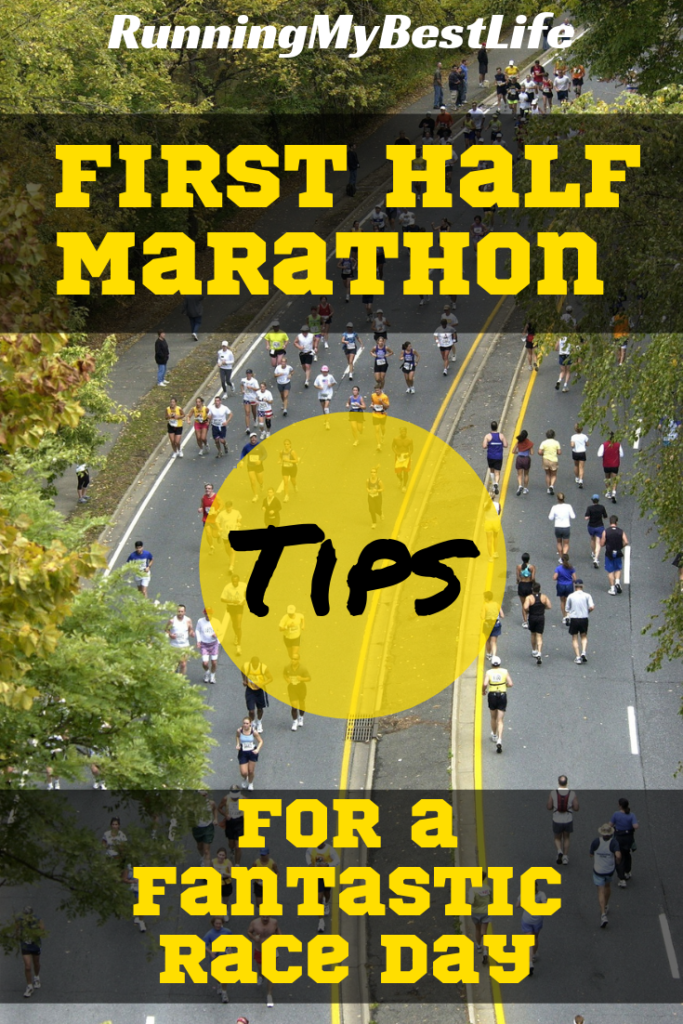
Lay Out Everything You Need the Night Before
Prevent that horrendous “I’m forgetting something” feeling by laying out everything you need and creating the famous “flat runner”.
Be sure to post an obligatory picture on Facebook.
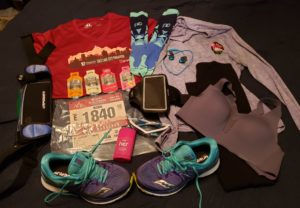
I like to go through everything in my mind from head to toe that I’ll need on race day. This includes everything I’ll need on my person while racing, everything beforehand, and everything after the race.
I also like to think through my race day routine, because this helps me pinpoint items I might have overlooked.
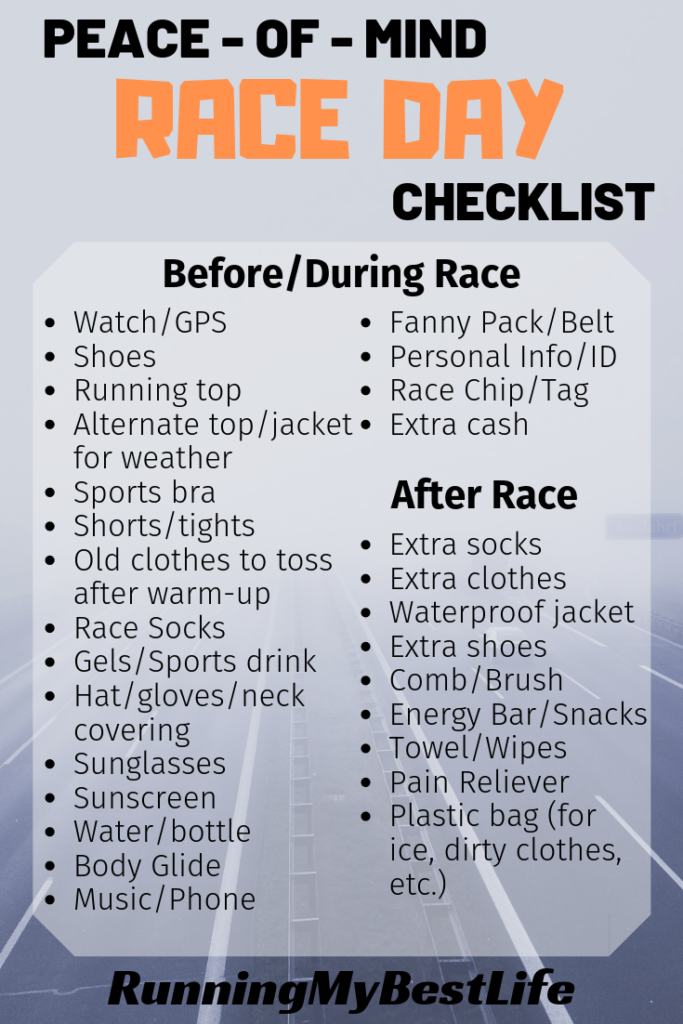
Eat a Good Race Morning Breakfast
Be sure to try your race morning breakfast out before long runs, and don’t try something new on race day.
Test out some of these ideas during your training weeks and find which one works best for you.
Related: 5 Best Pre-Race Breakfast Foods For Your Next Half Marathon
Dress in Layers for the Starting Line
Fair warning, depending on where you’re racing, it might be REALLY cold at the starting line! This one of the most important first half marathon tips because you might not know what to expect at the start. Dress in layers!
You might have several options here.
If there is a gear check, you can bring your favorite warm clothes up the starting area to stay comfortable, and then shed them 15 minutes before the race starts. Another option is to pick up some cheap sweats from Goodwill and shed them in the first few miles. Typically, races will donate all clothing dropped along the route.
Emergency thermal blankets are another option. These are cheap and easy to discard once the race begins. Many runners save these when they are given out at finish lines, and bring them to the starting line of their next race, or you can grab a pack of them from Amazon.
Related: What the Heck is a Gear Check?
Pin Your Race Bib on Your FRONT
I wish I didn’t have to say this, but I still see it all the time.
This isn’t a rodeo!
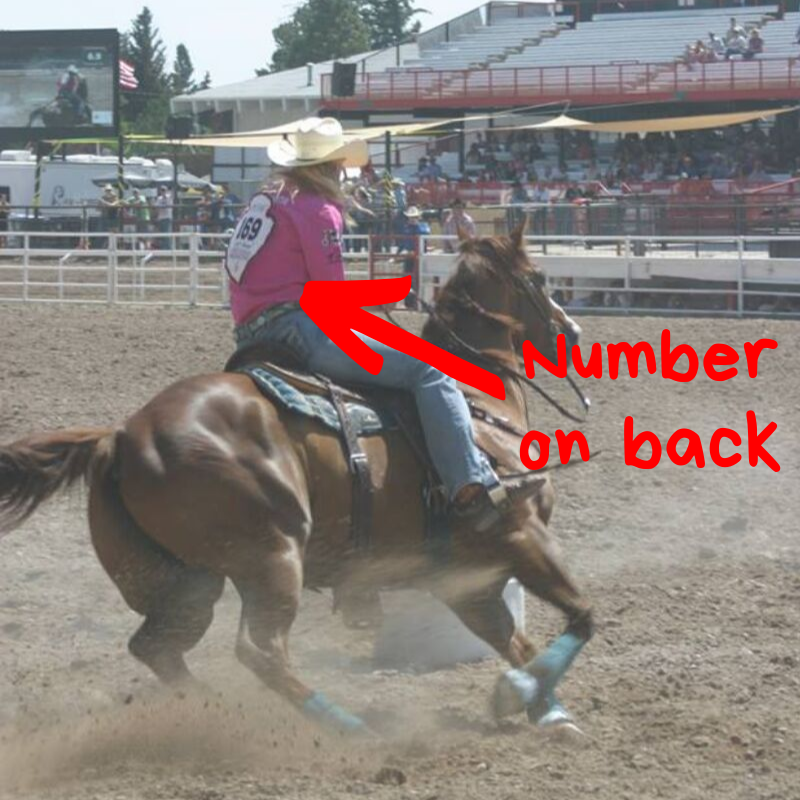
On a more practical note, your race bib contains your timing chip.
Make sure you pin your number on the front so the timing chip registers, and you want that chip to be the FIRST part of your body that crosses the finish line, not your back.
Pin it to your chest, belly, leg, whatever. Just make sure it’s visible from the front.
Oh, and if the race is taking pictures of you, seeing your bib number in the photos from the FRONT is how they identify you and sort the pictures.
If you doubt me on this, look up pictures of elite runners. Or look around at your race for the runners who really look like they know what they’re doing.
You’ll find they wear their bibs on the front.
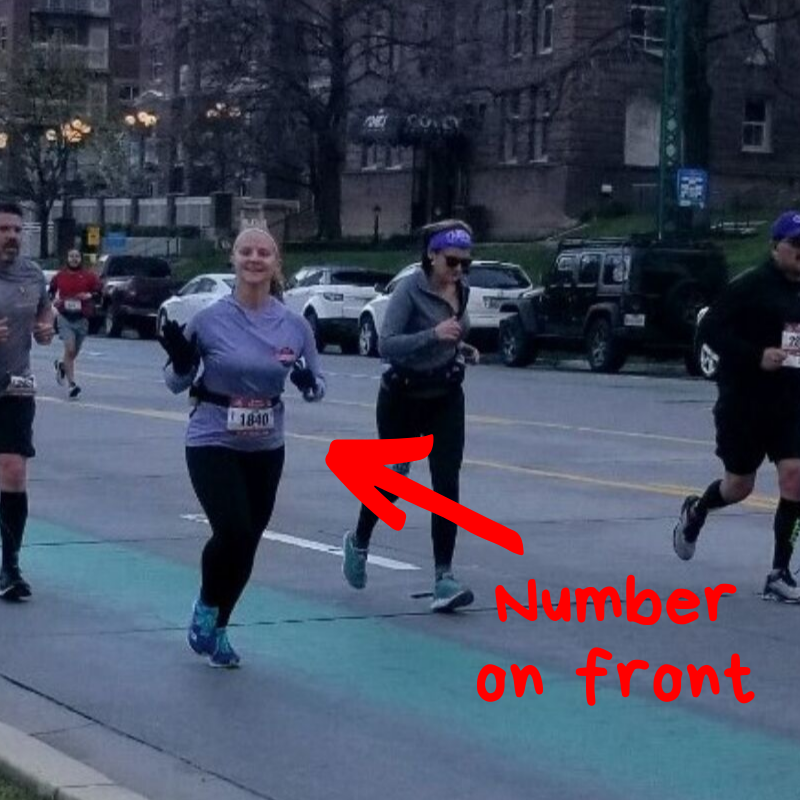
Empty Your Bladder and Bowels Before the Race Starts
There will be tons of porta potties at the starting area. They’re there for a reason…
No, really. Make sure you go #1 AND #2 before the race starts.
There’s nothing worse than being several miles into a race only to discover you really need to go. Something about running has a way of working everything loose. And race day nerves make things worse.
Ok, enough said about that topic.
Line Up Near Your Estimated Finish Time Pacer
Since this is your first half marathon, you probably don’t have a great idea of what your finish time will be.
A great place to estimate this is to go off of your long run pace per mile and calculate your total time over the half marathon distance.
This calculator actually does a pretty good job based on previous race times for other distances.
Your race pace will likely be 30 seconds to 1 minute faster per mile than your long run pace.
Avoid starting too far forward, because you’ll get passed left and right, and potentially get forced into running faster than you should for the first few miles.
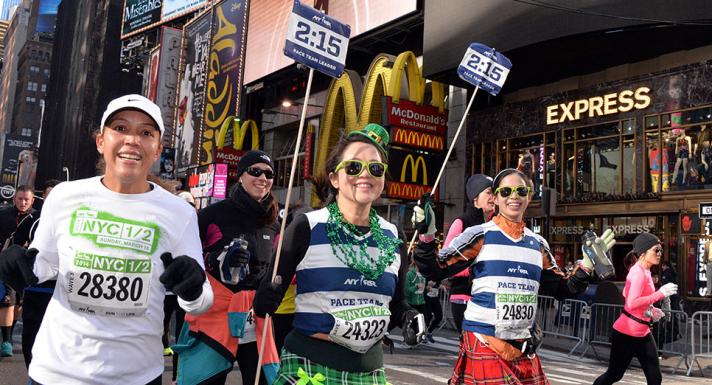
Additionally, if you line up too far forward, you’ll annoy the faster runners who lined up in the right spot and now have to weave around you and waste energy when people are shoulder to shoulder at the start.
It’s not about pride or ego, everyone’s fitness level is different in that moment on race day. Some people have already run several half marathons and have spent years training.
Be real about your fitness level and start in the right spot to help everything go more smoothly. Some races help you out by assigning starting corrals, and others just space out pacers and it’s your responsibility to find the right area.
Start at a Slower Pace Than You Think You Need To
FOOT STOMP!
I can’t say this enough, especially for your first half marathon. If there is only one thing you remember from this list of first half marathon tips, let it be this one.
There is so much excitement at the beginning of the race and after all the hard training you’ve done to prepare for this day, you SHOULD feel like the first few miles are WAYY TOO EASY.
My rule of thumb is to run the first 5 miles at a really easy effort, and then speed up from there depending on how I’m feeling.
Remember, this is 13.1 FREAKING MILES!
You have plenty of miles later where you can speed up if the first 5 miles were too easy. Trust me, it’ll get harder.
Related: How to Develop a Fail-Proof Race Day Plan
Don’t Take Any Fuel from Aid Stations Unless You’ve Tried It in Advance
If you haven’t tested a fuel on one of your long runs, don’t take it from the aid station.
When you’re pushing your body hard in a race is when it will be most likely to get upset from a fuel it isn’t used to. Getting an upset stomach or experiencing gastrointestinal distress in the middle of a half marathon is NOT helpful in making it a good experience.
You can avoid this by researching which fuel will be available along the race route (this is usually posted on the race website or in the athlete guide). Test the race fuel beforehand during your long runs to see if it agrees with your stomach.
Related: 3 Powerful Fueling Strategies for Your Next Half Marathon
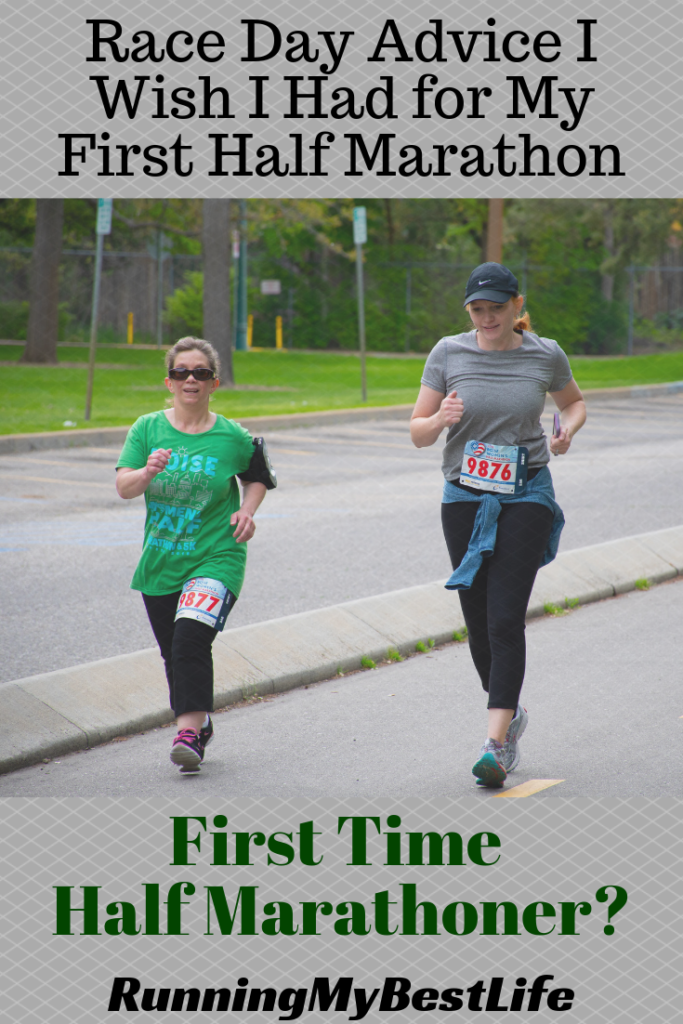
Be sure to sip some water at every aid station, even if you don’t feel like you need it yet
In my first half marathon, I made the mistake of SKIPPING water from the first several aid stations. I was carrying my own sports drink and I underestimated how much fluids I needed to consume.
Long story short, the temperature rose significantly in the 2 hours I was on the course, and I was SUPER dehydrated by the end of the race. The only thing I could think about for the last 3 miles was getting to the next aid station so I could drink more water.
Related: My First Half Marathon: Race Day!
Do yourself a favor and grab some water to sip at every aid station, even if you don’t think you need to. And even if you’re carrying your own hydration.
By hydrating from the beginning, you’ll stay on top of it and avoid getting dehydrated.
Carry Your Favorite Fuel with You
Get a cool running belt like this one and practice with it during your long runs.
It’s a guaranteed to have the exact flavor and brand of fuel you know your body likes. My favorite tried-and-true fuels are Honey Stinger Gels and Huma Chia Gels. I practice with these on my long runs along with Nuun Endurance to drink.
Then, I bring these with me during every race so I know I have the fuel that works for my stomach, and it’s one less thing to worry about on the course.
Take in the Scenery
My first half marathon was down a BEAUTIFUL canyon. Looking back, I wish I had pulled my phone out a few times to take pictures. Be willing to take in the scenery and enjoy the experience.
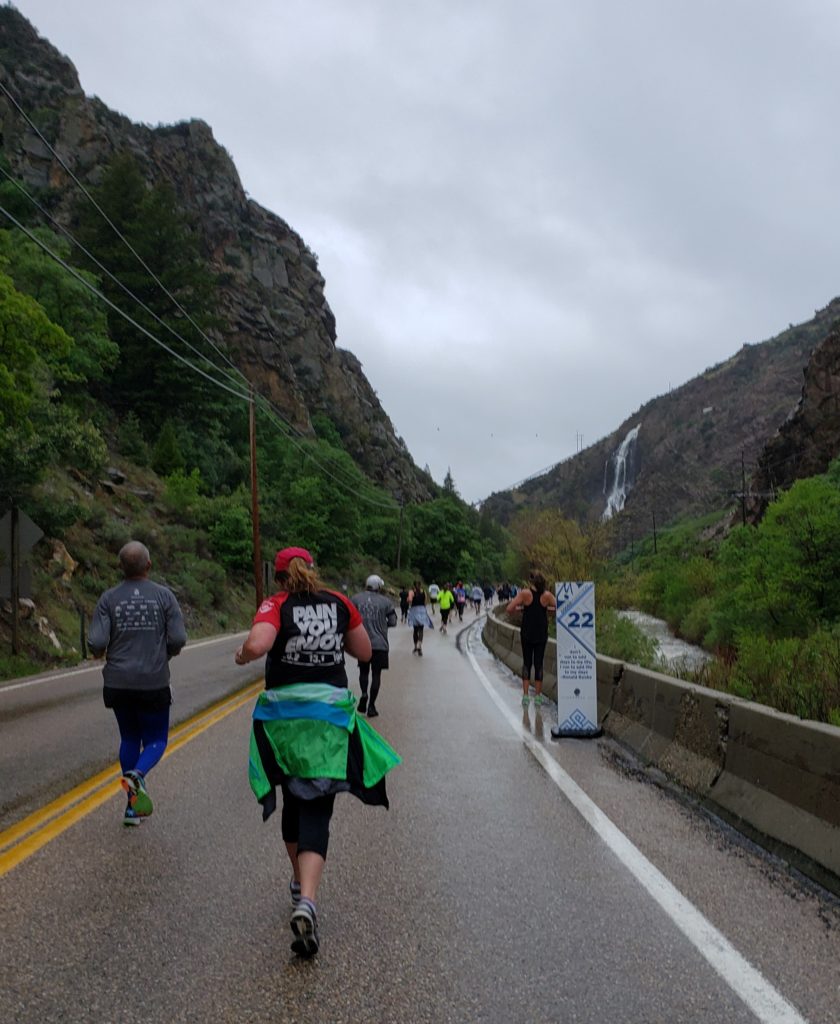
Look at the spectators cheering, read all the signs, and appreciate how awesome it is that you’re running a half marathon!
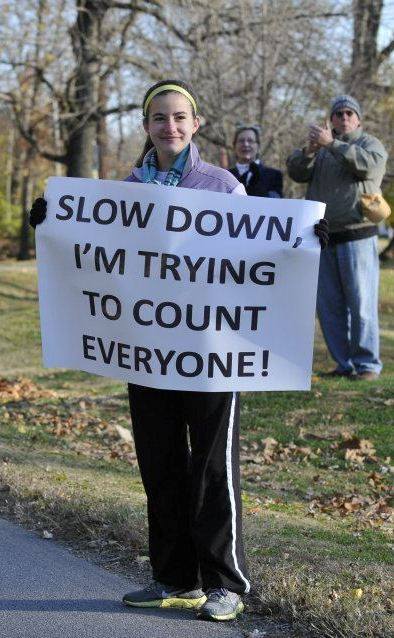
Keep Moving Forward
If you stop, it’ll be a lot harder to get started.
Chances are, you’ll probably have to walk at some point during your first half marathon. Many people plan to use the run/walk method, which is a great idea if that works for you.
I recommend pre-determining how long you will allow yourself to walk, and then get your butt moving again.
When you’re tired in the final miles of the race, it is REALLY HARD to start running again after you walk. Just keep moving forward, and you’ll be at the finish line before you know it.
Remember This Is Supposed to Be a Fun Experience
Why are you running a half marathon?
More than likely, you’re not an elite runner.
You’re probably running as a way to improve your health but most of all, half marathons are supposed to be fun! Follow these tips for your first half marathon, think positive, be in a good mood, and encourage the other runners around you. This makes the race a better experience for everyone.
Related: How to Find Your “WHY” in Running
Make a Recovery Plan Before You Toe the Starting Line, Then Follow It
In the heat of the “I just finished my first half marathon” moment, you’re going to forget all about the smart things you should do for your recovery following a race.
I’m going to give you a fair warning: If you forget to focus on recovery, then you’re probably going to feel like you got hit by a bus the next day.
Heck, you might feel like that anyway. But there are a few things you can do to help lessen that feeling.
4 Tips for Post-Race Recovery
- Start hydrating as soon as you cross the finish line with a zero or low-calorie drink. I’m big on Nuun right now!
- Within 30 minutes of crossing the finish line, drink a protein recovery shake designed for runners. Herbalife24 Rebuild Strength is the perfect recovery drink after a hard run.
- Keep walking and stretching for at least an hour after you cross the finish. This will help flush the lactic acid out of your muscles and prevent cramping.
- Schedule easy active recovery days during the week following your race. You might not be back to 100% until a week later, but it’s better than not being able to walk at all for a week. Do things like biking, swimming, yoga, or walking the dog…but the key is to keep it really easy.
Related: Recovering from a Half Marathon Sucks: Here’s How to Make It Suck Less
[convertkit form=878335]
When is your first half marathon?
If you’ve already run one, what first half marathon tips would you offer for newbies?
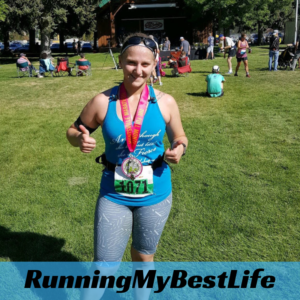
Run Happy,
Alexis
- Nailing Your Marathon Hydration Strategy: A Comprehensive Guide
- Conquering Marathons in the Cold: A Comprehensive Guide
- Harnessing the Power of Technology for Successful Marathon Training
- Mastering the Marathon: The Ultimate Guide to Nutrition and Training
- Ultimate Guide to the Top 5 Running Shoes for Beginners in 2023
About Me: I’m Alexis, Founder of RunningMyBestLife! I am an avid recreational runner, half marathoner, wife, dog mom, busy professional, downhill skier in Northern Utah. My mission is to help new enthusiasts fall in love with the sport of running. I believe that running is a catalyst to taking control of your life and living your best life by design. Learn More –>
